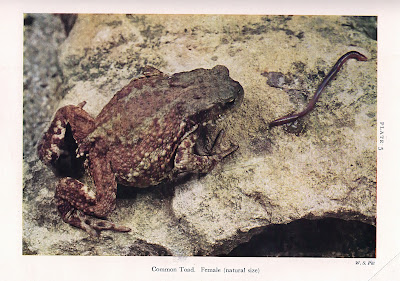Walter S. Pitt’s photographs were used to illustrate Malcolm Smith’s seminal book, The British Amphibians and Reptiles published by Collins in the New Naturalist series in 1951. Pitt’s photographs also appeared in magazines on aquaria and there is mention that he was the recipient of one of first four Amazon sword plants to be imported into Britain. He was a member of the Zoological Photographic Club which led me to suspect he might have been a gifted amateur photographer. But I could found nothing further. I asked if anybody had information in a post on here on 22 February 2018. A couple of days ago the President of Bath Photographic Society contacted me to say our W.S. Pitt was unlikely to be the W.S. Pitt—the only possibility I could find—who was a member of that Society in 1888. Today, by chance while looking for somebody else, I found that Walter S. Pitt was a member of the Avicultural Society and that his address was listed. A search in ancestry.com soon showed who he was.
Walter Sydney Pitt was born on 19 November 1900 at 15 Portland Place London. His father was a physician, a consultant at Guy’s Hospital. Walter Pitt became a solicitor in the city (Pontifex, Pitt and Langham of Holborn Circus). He lived in Surrey at ‘Wildwood’, Silverdale Avenue, Walton-on-Thames. He died on 21 February 1983. It appears that he and his wife, Muriel Evelyn Gillard, had no children.
Confirmation that this was the Walter Pitt I was looking for has also appeared since I did the searches in 2018. On eBay at present is a clipping from a 1946 issue Rural Affairs Magazine. The caption to the photograph shows that Pitt won second prize (and £2) in a photographic competition for a photograph of a Greater Black-backed Gull alighting on a rock. From the caption the details of the camera he was using are given. It is described as an Exacta 2¼ x 2¼ fitted with a 8¼ inch Cooke Aviar lens. The film was Ilford HP3 and the exposure 1/1000th second at f/4.5*.
Having identified Walter Sydney Pitt as a gifted amateur photographer, aquarist and aviculturist, the question now is, do his original photographs which illustrated so famous a book, survive anywhere?
Finally, some of the colour plates by Pitt from Malcolm Smith’s book. The newts were photographed in an aquarium, another photographic skill acquired by Walter Pitt.
*The camera is interesting. The negative size shows that is must have been an Exakta 6x6, a camera that only became available in Germany a week or so before the outbreak of war. My guess is it came to U.K. with a serviceman some time in 1945 and that Pitt was trying it out. The lens was a famous Cooke Aviar 210 mm lens made for large format cameras by Taylor, Taylor & Hobson in Leicester. The Exakta’s roll film would have captured just the centre of the image projected by the lens, thereby increasing its apparent focal length. Some special fitting must have been made to adapt the lens to the lens mount of the Exakta. At the time of Pitt’s photograph, the rating of Ilford HP3 film was the equivalent of approximately 250 ASA. In order to use the shutter speed he did (to capture the bird in flight) it must have been a bright if not fully sunlit day when he encountered the gull.



No comments:
Post a Comment